Perfect Vanilla Butter Cake
This is the only Vanilla Butter Cake recipe you’ll ever want or need. Mixing technique can make a big difference when making cake batter. Find out the best way to get a light and tender cake.
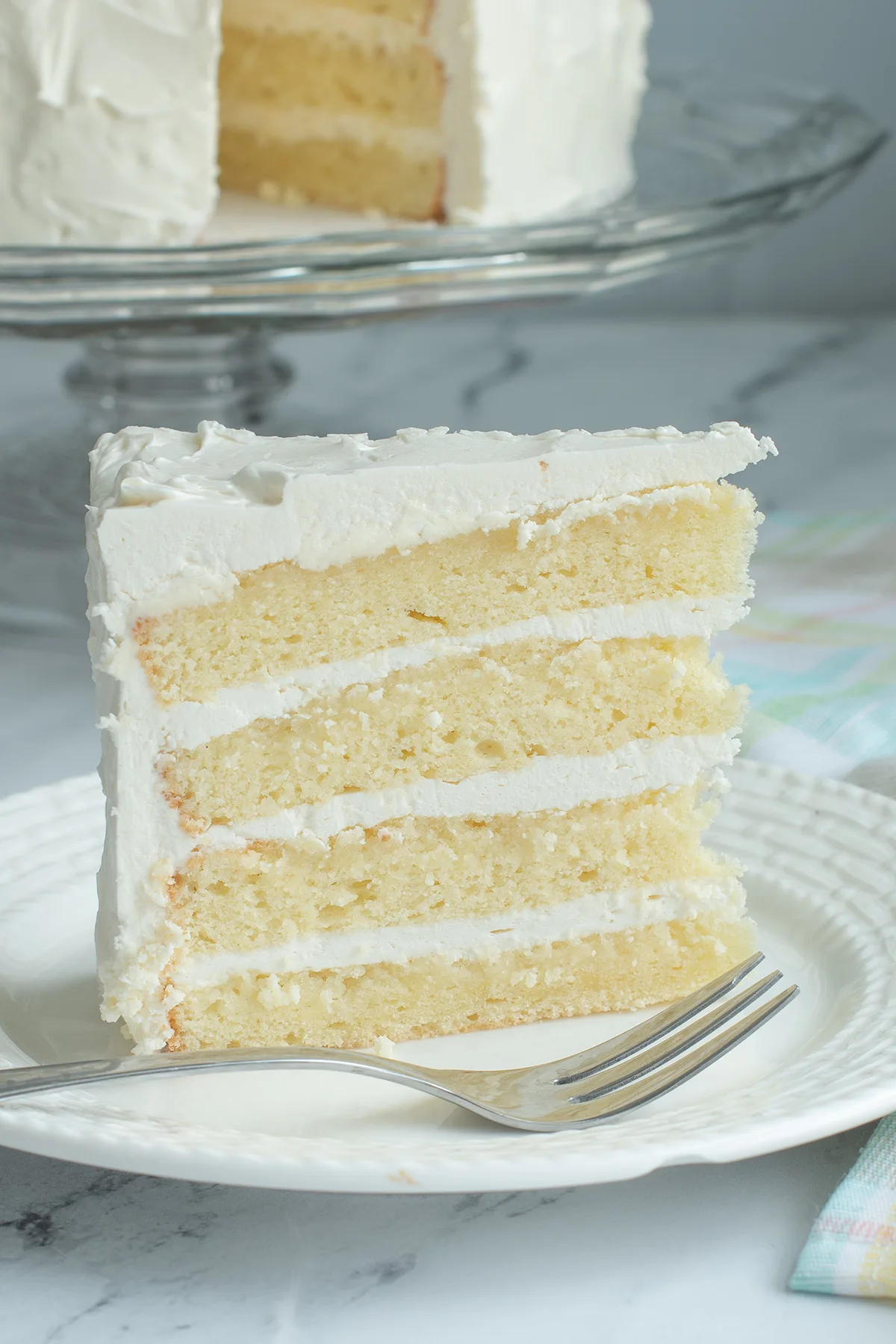
Table of contents
Why this is the best Vanilla Butter Cake Recipe
First of all this is a great recipe because it is a balanced recipe.
Professional bakers use the “Baker’s Percentage” to balance the ingredients in a recipe. With this knowledge I worked for months developing the best vanilla cake.
In fact, this exact recipe was the base for hundreds and hundreds of wedding cakes I sold when I had my wedding cake business.
You can find the percentages for this Vanilla Butter Cake recipe in this all-encompassing post describing how to create the best cake recipes.
Once you have a balanced recipe you need to think about mixing technique.
I make my butter cakes using the “reverse creaming” method of mixing. Reverse creaming makes a cake with a soft and tender crumb. You can see side by side comparisons of reverse and traditional creaming below.
Recipe Ingredients
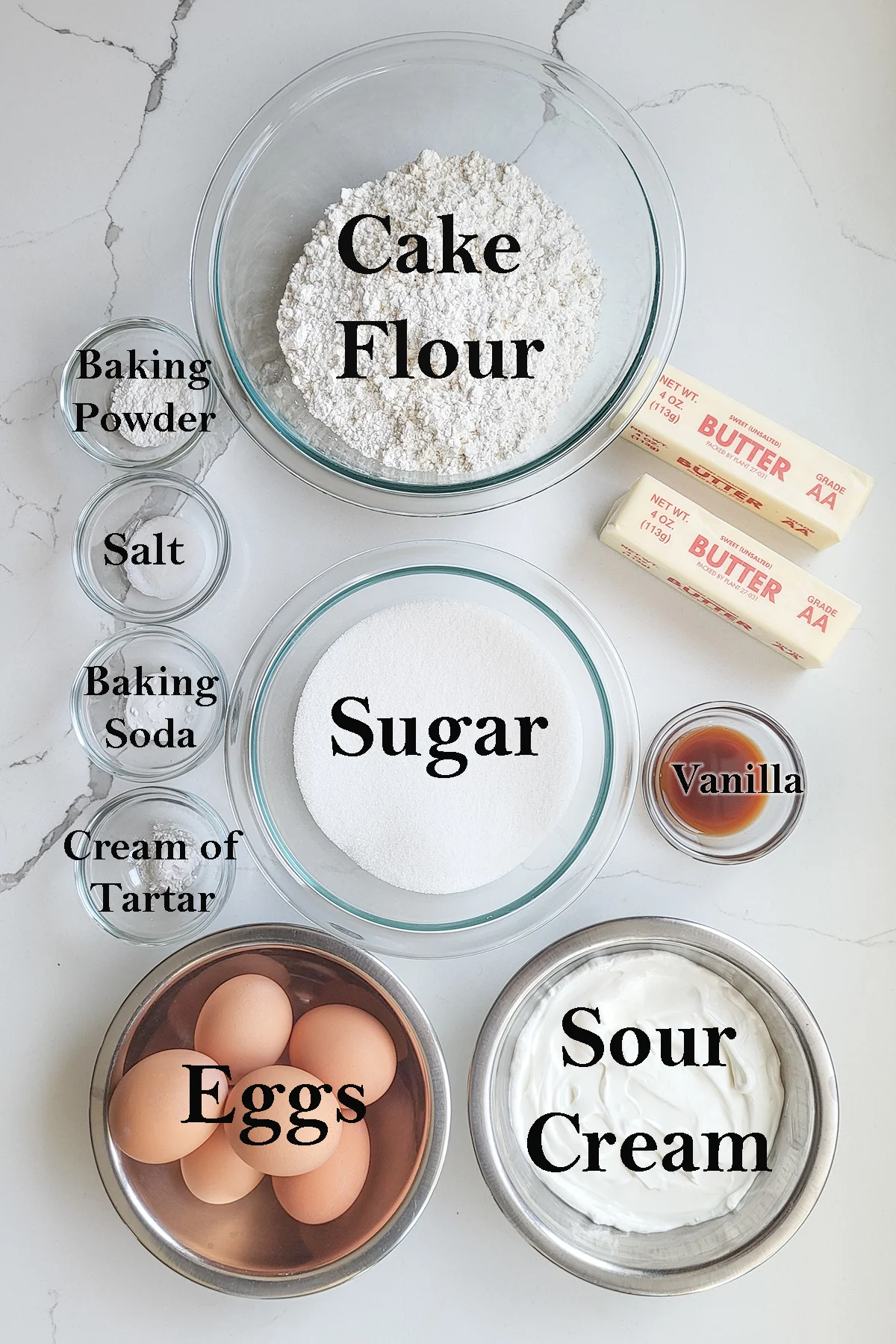
Ingredient Notes
- Cake Flour – Has a lower protein content than all purpose flour so it makes a softer cake. I prefer bleached cake flour. Bleached cake flour is acidic which tenderizes the cake and allows the batter to absorb more liquid for a moister cake.
- Sour Cream – Is used instead of milk as the “liquid” in this batter. Because sour cream is acidic it tenderizes the crumb of the cake and the added fat enriches the batter.
- Eggs – Extra egg yolks in the batter enriches the cake and emulsifies the batter for an even and soft crumb. The whites are whipped and folded into the batter for an extra light and soft cake crumb.
- Cream of Tatar – This acidic ingredient stabilizes the whipped egg whites and acidifies the batter for a softer crumb.
Process Photos
See the recipe card for detailed instructions and measurements.
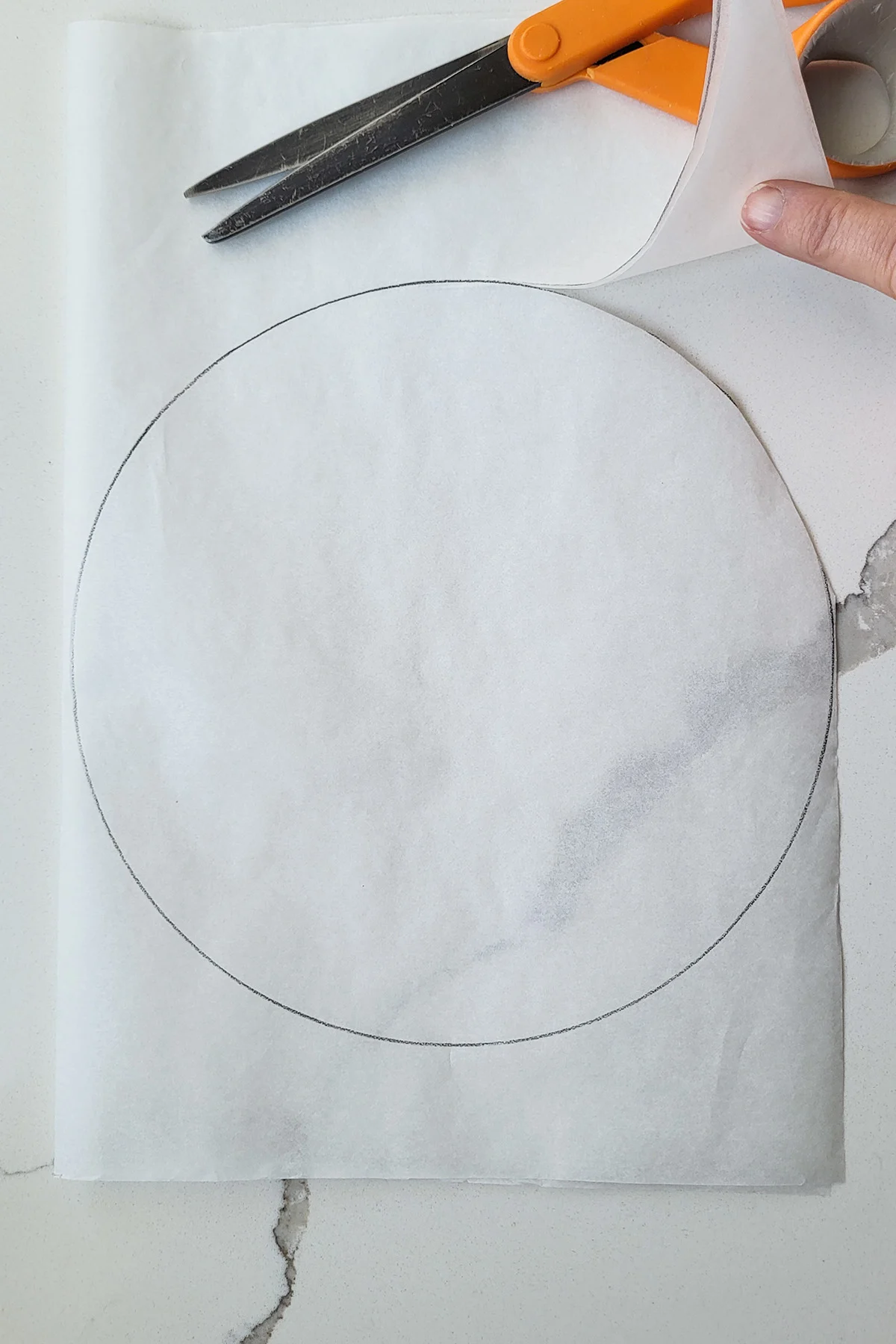
- Draw an 8″ circle on parchment paper using your cake pan as a guide. Cut out two circles and use them to line your cake pans.
- If you don’t have parchment paper butter and flour the bottom of the cake pan only, not the sides.
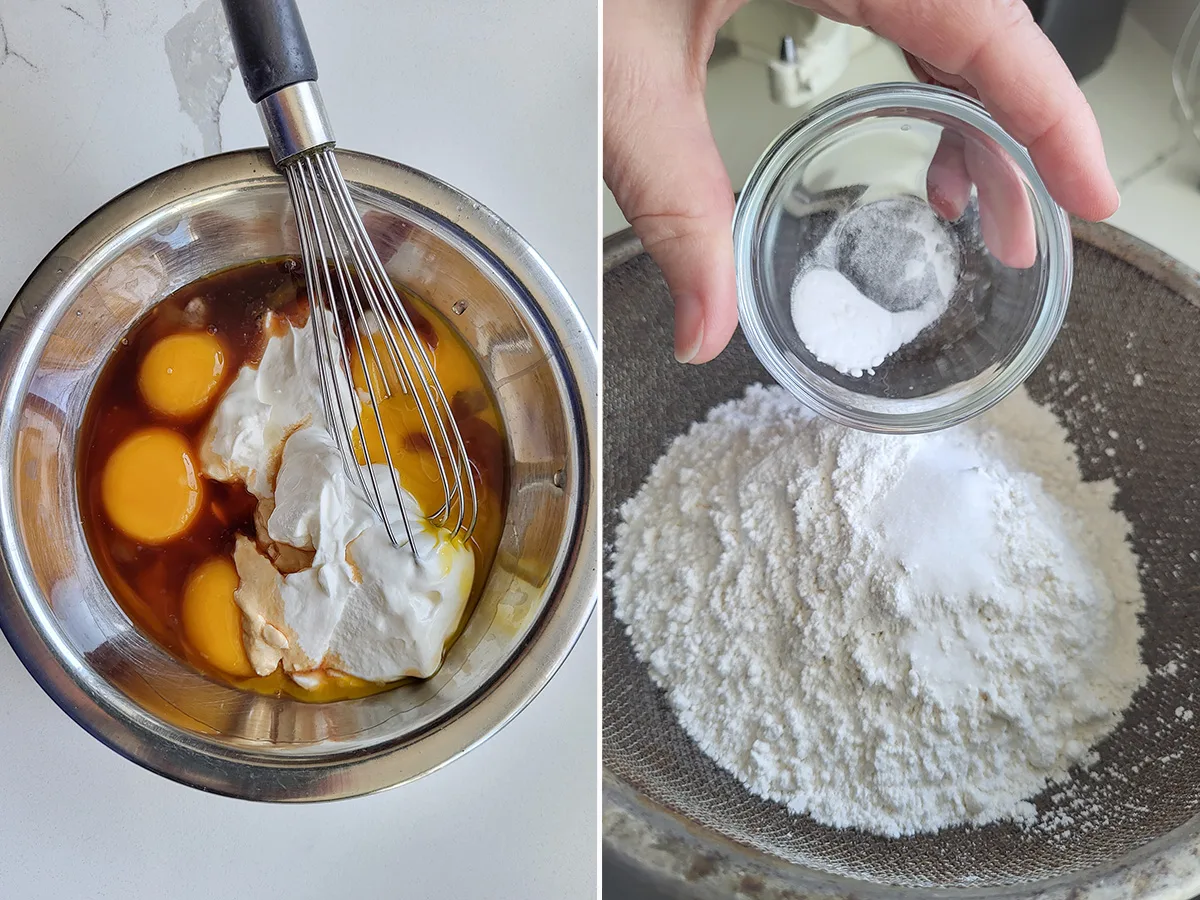
- In a small bowl whisk together the yolks, sour cream and vanilla.
- Sift the dry ingredients into a mixing bowl.
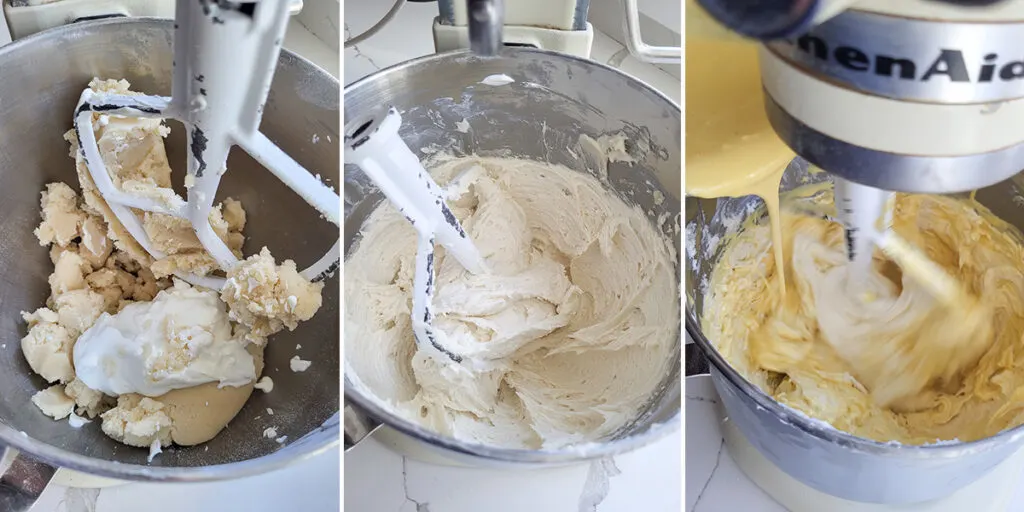
- Mix the dry ingredients on low speed and add the butter. Mix until it forms a thick paste. Add the reserved sour cream.
- Mix the batter on high speed until it is light and aerated. Scrape the bowl and beater.
- With the mixer running on low, add the yolk mixture. Mix until combined.
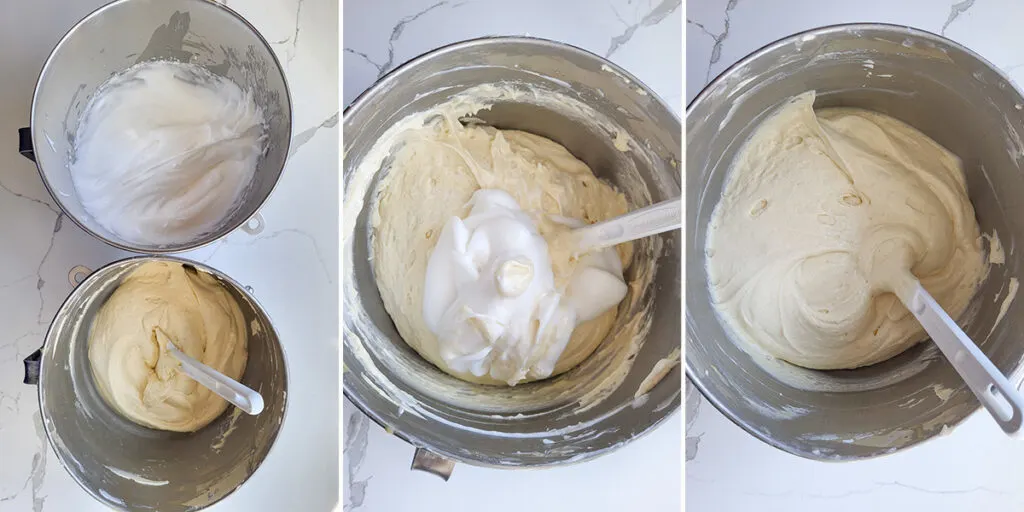
- Whip the whites with the cream of tarter and the remaining sugar. Do no overwhip the whites.
- Fold the whites into the batter in two batches.
- Fold just until there are no streaks of whites.
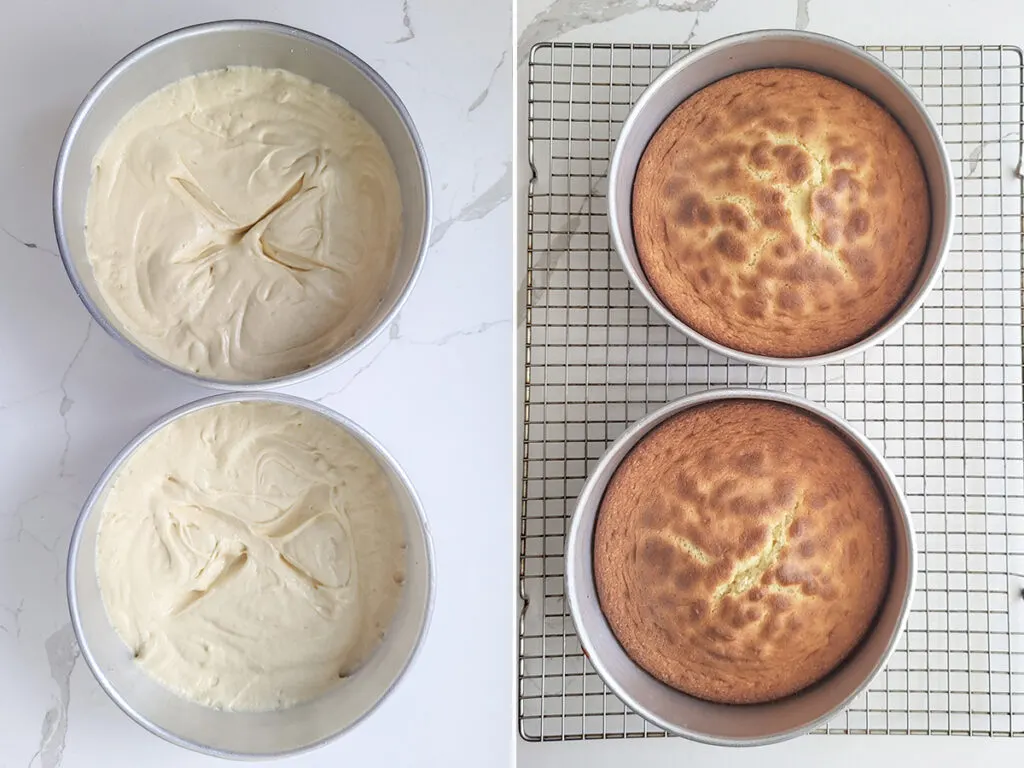
- Evenly divide the batter between the two pans. Smooth to even level then use the tip of your spatula to make an “X” in the center of each cake. This will help the cake rise more evenly in the oven.
- Bake until the center of the cake springs back when lightly pressed. Cool in the pan for 20 minutes then cool completely before icing.
What’s the difference between vanilla cake and yellow cake?
Most people use the terms “vanilla cake” and “yellow cake” interchangeably. Vanilla is the flavoring in the cake. The cake is yellow because of the eggs in the cake.
That being said, not all vanilla cakes are yellow cakes. If you eliminate the egg yolks in the cake and make white cake flavored with vanilla, it too is a vanilla cake.
Reverse Creaming vs. Traditional Creaming
Before posting this recipe I decided to do a quick kitchen experiment to back up my claims that reverse creaming is the way to go for this cake.
I used the same ingredients and mixed them with traditional creaming, reverse creaming and reverse creaming with the eggs separated and the whites whipped and folded in.
There were distinct differences between the three cakes.
- Cake 1 (traditional creaming method) had an open and regular crumb, but was not as tender as I would like and it had a slightly oily mouth-feel.
- Cake 2 (reverse creaming) was very tender, velvety and soft.
- Cake 3 (reverse method with whipped whites) had a slightly irregular but very tender crumb. It was not quite as velvety as cake 2, but it was lighter and quite tender. This was my favorite cake!

Three cakes with the exact same ingredients, but different mixing methods. Left=Traditional Method, Middle=Reverse Creaming, Right=Reverse with Whipped Whites
This is a really great all purpose yellow cake that is tender yet strong enough for stacking or carving. For more information about cake batter, visit the Baking School page.
Frosting your Cake
I like this recipe filled and iced with Italian Meringue Buttercream or Swiss Meringue Buttercream.
American Buttercream is slightly sweeter than meringue buttercream and is also nice with this cake.
Storage
The uniced cake can be stored for 2-3 days at room temperature for up to 2 months in the freezer. Do not refrigerate the cake unless it is filled or iced with a perishable frosting.
More Cake Recipes
Now that you’ve made this recipe what should you do with all the extra egg whites? Check out this collection of recipes that use extra whites for some great ideas.
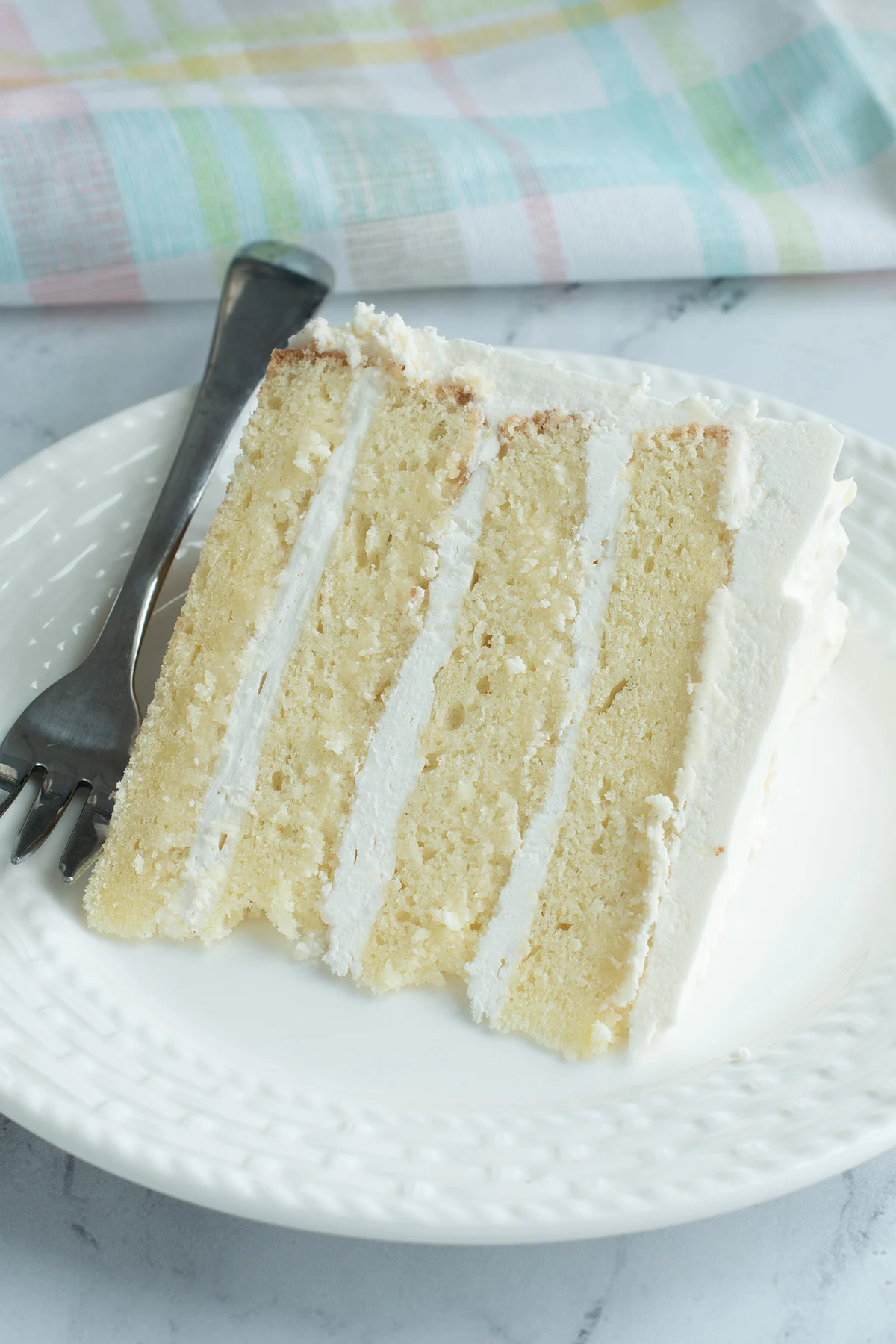
If you love this recipe as much as I do, please consider leaving a 5-star review.
Vanilla Butter Cake Recipe
Ingredients
- 6 large egg yolks (room temperature)
- 8 ounces sour cream (1 cup, room temperature, divided)
- 1 tablespoon vanilla extract
- 12 ounces granulated sugar (1 ½ cups, divided)
- 9 ounces cake flour (2 cups, see note)
- ¾ teaspoon baking powder
- ¾ teaspoon salt
- ¼ teaspoon baking soda
- 8 ounces unsalted butter (room temperature)
- 3 large egg whites (room temperature)
- ¼ teaspoon cream of tarter
Instructions
- Preheat the oven to 350 °F. Line two 8"x3" round cake pans with a circle of parchment paper or butter and flour the bottom of the pans only, not the sides.
- Combine 6 large egg yolks, 1/2 the sour cream and 1 tablespoon vanilla extract in a small bowl, whisk to combine, set aside.
- Into a mixer bowl put 1 ¼ cups of the sugar, sift in 9 ounces cake flour, ¾ teaspoon baking powder, ¼ teaspoon baking soda and ¾ teaspoon salt. Mix on low speed for 10 seconds to distribute the leavening. Add 8 ounces unsalted butter to the flour mixture. Mix on low until the butter is incorporated and the batter looks like a paste. Add the other ½ of the sour cream to the flour and butter mixture. Increase the speed to medium and mix about 3 minutes until the batter lightens in texture. If you're using a hand mixer add another minute or two to the total time.
- Scrape the sides and bottom of the bowl. With the mixer on low, add ½ the egg yolk mixture. Mix until mostly incorporated. Scrape the sides and bottom of the bowl. Add the rest of the egg yolk mixture. Scrape the bowl and mix until incorporated.
- In another bowl, whip 3 large egg whites with ¼ teaspoon cream of tarter on medium high until they form soft peaks. Turn the mixer to medium low and slowly add the remaining ¼ cup of sugar. Turn the mixer to medium high and whip the whites to full peak. Fold the whites into the base in 2 parts, folding just until there are no streaks of egg whites.
- Divide the batter between the 2 pans and spread so it’s level.
- Bake until the center of the cake springs back when lightly pressed or a toothpick inserted into the middle of the cake comes out clean, about 25-30 minutes.
- Cool 10 minutes in the pan and then turn out onto a cooling rack. When fully cooled, wrap in plastic and refrigerate at least 3 hours or overnight before filling and assembling the cake with your favorite frosting.
Would you like to save this recipe?
As an Amazon Associate and member of other affiliate programs, I earn from qualifying purchases.

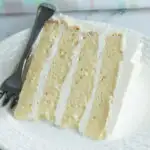
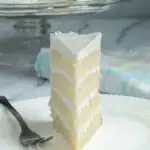
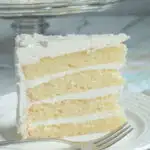
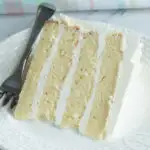





Hello!
I reaized that ai had accidentally written in the “review” section instead of “comments.” Oops! Sprry! The rating still holds! So here is the question:
I absolutely love how this cake tastes and melts in your mouth – it is a favorite in our household! In you book, you mentioned this recipe can make 24 standard cupcakes. Every time I do, however, after they are done baking they “shrink” while cooling. Why is that? It drives me crazy! They still taste amazing, but don’t keep their shape. I’d send a picture, but I don’t think it is possible here. Thank you for writing that amazing book! We love the recipes!
You might be over baking them a bit. Bake just until the center springs back.
Hi, after reading the reviews I am definitely going to try this recipe for a wedding cake this summer! I’m a home baker who follows the directions to a T every time. My question is about eggs, as the size of eggs vary so much. Most recipes call for large eggs but what is the definition of a large egg? In another recipe I did, the author actually put a gram weight and I was surprised to find my “2 large eggs” were actually less than what the recipe called for. Since then I’ve always wondered if the eggs I’m incorporating were enough, as it is such an important ingredient in cake. lol. My question is, Do you have a general gram weight for the egg whites for this recipe? As I double-check everything, and use my gram scale religiously, I would love to check my egg accuracy with a scale. Thank you so much! And one other quick question…Is there any advantage to using superfine sugar (not confectioners) opposed to regular granulated sugar? I’ve seen that in other recipes and wondered if it improves the cake or just a bunch of hooey. Thanks!.
Hi Cynthia, if you are based in the US then anything labeled “large” eggs will be a fairly consistent size. There may be a few gram difference between any two large eggs, but not enough to worry about. If you want to weigh to be sure you can estimate about 1.75 oz (50g) for a large egg (out of shell), about 1/2 oz (14g) for a yolk and about`1.25 oz (35g) for a white.
If you were doing the regular creaming method I would say that superfine sugar would actually be a disadvantage since you need the sugar crystals to aerate the butter. Doing my research for my “Sugar in Cake Batter” post I compared cakes made with regular granulated sugar vs. confectioner’s sugar. There was actually very little difference between the two. I used the reverse creaming method so I don’t think the crystal size really mattered. But I don’t see any advantage to using superfine over regular sugar.
Hi Eileen,
Thank you for all the tips, they are very useful, i’ve tried vanilla butter cake, chocolate butter cake, they were superb. Now, can you please send me a recipie without eggs, as some people here are vegetarians.Thanks
I am absolutely loving your recipes. I’m so happy I found your blog. I have two questions. 1. If I’m using both butter and oil in a cake, do I cream the butter in the dry ingredients and put the oil in with the egg mixture or put both the butter and oil in the dry ingredients. 2. If I am using only oil in a cake recipe and I’m separating the egg yolks and whites (to whip the whites later), do I add the oil in with the egg yolks? Thanks.
I would follow the directions in the recipe as to when to add the fat. Just make sure to find reliable and well-tested recipes.
Hello! Is that gorgeous cake made up of 4 separate layers or two that have been split?
Two that have been split!
Thanks! Would full fat Greek yogurt work okay too instead of sour cream?